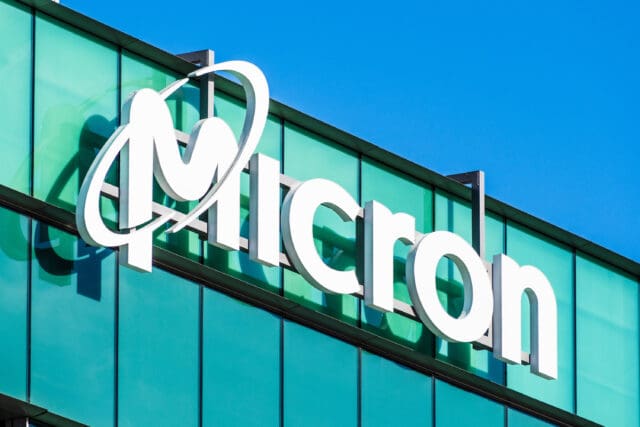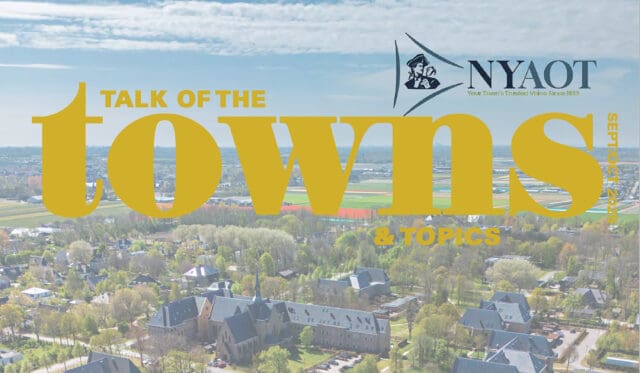Rapid-Growth Communities: Micron is coming. Is Central New York ready for it?

Ed Flynn and Jonathan Derworiz explore the effects of Micron’s expansion on Central New York.
Micron Technology, Inc. is investing over $100 billion to build a new semiconductor manufacturing facility in Clay, N.Y. over the next 20-plus years. Built in two phases between 2025 and 2044, the project is expected to bring 9,000 direct jobs at Micron, 42,000 indirect (suppliers) and induced jobs (retail, restaurants), and 54,000 new residents to the Central New York (CNY) region. Infrastructure, housing, and environment are among the many areas to be impacted now and decades to come. Not to be overlooked are the implications for education, recreation, transportation, and local government. Is the Central New York region ready for Micron-level development? This question has been on our minds since early rumblings of the development in 2022. We have participated in conversations, attended panels, and have read many perspectives on Micron’s magnitude and what it means for Central New York. While it is difficult to predict the exact effects of these new jobs, new residents, and new money, as planners, we know that we must do our best to prepare CNY for it.
Education & Recreation
With 54,000 new residents comes new families and children of all ages—a challenge for the local school districts and parks. To retain residents, schools, parks, and recreational amenities may need to be built, retrofitted or expanded. To do so, local governments must ensure that their respective plans and strategies are proactive and contemplating enhancements for recreation. This could be in the form of recommendations for acquiring additional land or identifying tax revenue opportunities such as PILOT Increment Financing (PIF) for new development, which can provide funding for school, parks, and recreation expansion or new construction. Once development rises, so too will parcel prices.
Transportation
How will more than 50,000 new employees travel between home, work, the grocery store, and their favorite restaurant? Municipalities must consider the impacts of a significant jump in population on transportation—are updates or alternatives necessary? Like schools and parks, be proactive and plan for the land now.
Adding a layer of consideration is the I-81 Viaduct Project, a New York State Department of Transportation project to address structural deficiencies and non-standard highway features in the corridor, while improving travel through the City of Syracuse. In addition, Centro, the Central New York Regional Transportation Authority’s public transportation provider, is designing to route Bus Rapid Transit (BRT) through the City of Syracuse.
Transportation influences are far reaching in Central New York right now, and responding requires a tremendous effort from local government. Consider hiring professional multi-modal planning consultants who can help see the big picture and recommend remedies to transportation-related growing pains.
Planning for the Future
In anticipation of Micron-related growth, municipalities should consider budgeting for additional staffing and/or consultants. Development involves site plan reviews, permitting, and zoning code compliance. Professionally trained staff, boards, or committees can meet these needs. An alternative is budgeting to hire a consultant to complete these tasks, even an embedded consultant that serves as an extension of the municipality’s staff.
In the Fall of 2023, the Town of Clay hired LaBella Associates to prepare, in coordination with a project Steering Committee, a Land Use Study. Following extensive public input and research into similar rapid-growth communities, the Study articulated a vision for the community. The focus was to not only absorb the growth but also leverage it to create a sense of place and identity through the development of three new walkable mixed-use centers. The goal is to update zoning and development regulations so the Town can shape development in the next 10-15 years, as it relates to Micron-induced and future anticipated growth.
Comprehensive Solutions to a Comprehensive Problem
Cities like Austin, Nashville, and Raleigh have experienced similar rapid, business-driven growth. The “Research Triangle” in Raleigh, Durham, and Chapel Hill, N.C. was intentionally planned for growth as an innovation hub. The surrounding communities were prepared with applicable comprehensive plans, land use strategies, and zoning code updates. Not only were infrastructure and housing impacts considered, but so too were downtown areas, bicycle and pedestrian facilities, and other amenities.
The community growth anticipated from a $25.11 billion company like Micron is immense and will be difficult, if not impossible, to distill to a single metric. Among the elements likely to feel the effects are infrastructure, housing, natural resources, and community identity as well as education, recreation, transportation, and local government—nearly every building block of a locale. Proactive community planning—comprehensive plans, land use plans, zoning codes—is a highly effective tool for managing growth because it considers all these elements.
For example, Onondaga County developed the Plan Onondaga County Comprehensive Plan. The county-wide plan, which mentions Micron, states, “This plan will help ensure a positive impact on the areas where the County currently lags behind peer counties nationally… The Plan themes focus on producing the conditions that can lead to sustained economic investment.” (Plan Onondaga, 2023). The County provides the framework and funding to address growth and its impacts in the next 15-20 years. Villages, towns, and cities within the county can customize their approaches. A County-wide planning exercise like this can direct municipalities toward the same goal, supporting successful regional planning efforts.
Community Planning Consultants
Planning consultants are experts at seeing the whole picture. With help from the community, we closely examine the hard (roads, community facilities, housing) and the soft (demographics, workforce, regulatory framework) infrastructures of a municipality, and make every effort to anticipate future challenges, and develop recommendations for leveraging opportunity. We support communities of all shapes and sizes and provide an array of services—from comprehensive planning and growth management to area-specific plans to site plan application review—by gathering all efforts under one umbrella for a well-rounded approach to growth. Depending on the needs of the community, we can tailor our approach.
Consider which approach is right to help your community seize the opportunities Micron brings.
A Missed Opportunity
Locales without a growth strategy are at risk of missing out on a once-in-a-lifetime opportunity to leverage growth—a chance to bring in tax revenue, boost economically disadvantaged areas, and build community identity. Get ready, because Micron is coming.
As Featured In
Talk of the Towns
Rapid-Growth Communities: Micron is coming. Is Central New York ready for it? was originally published in the New York Association of Towns’ magazine, Talk of the Towns, September/October 2025 issue.
View the Magazine Here

About the Author
Ed Flynn, AICPDirector of Planning
Ed is a certified planner with over 30 years of experience in planning, economic development, and downtown revitalization, including 13 years as the City of Batavia’s Director of Community Development. His extensive experience working with elected officials, community groups, and municipal staff has resulted in successful, award-winning projects. Ed is passionate about helping communities be a better version of themselves and enjoys shepherding a community’s revitalization journey from concept to reality.

About the Author
Jonathan Derworiz, MCIP, RPPSenior Planner
Jonathan is a Senior Planner with over a decade of experience collaborating with communities in diverse urban and rural settings. His background spans both the public and private sectors, equipping him with a unique ability to navigate complex planning challenges and address the needs of various stakeholders. He has extensive experience in municipal planning services, land use policies, and zoning. Jonathan is a member of the Canadian Institute of Planners and a Registered Professional Planner.

